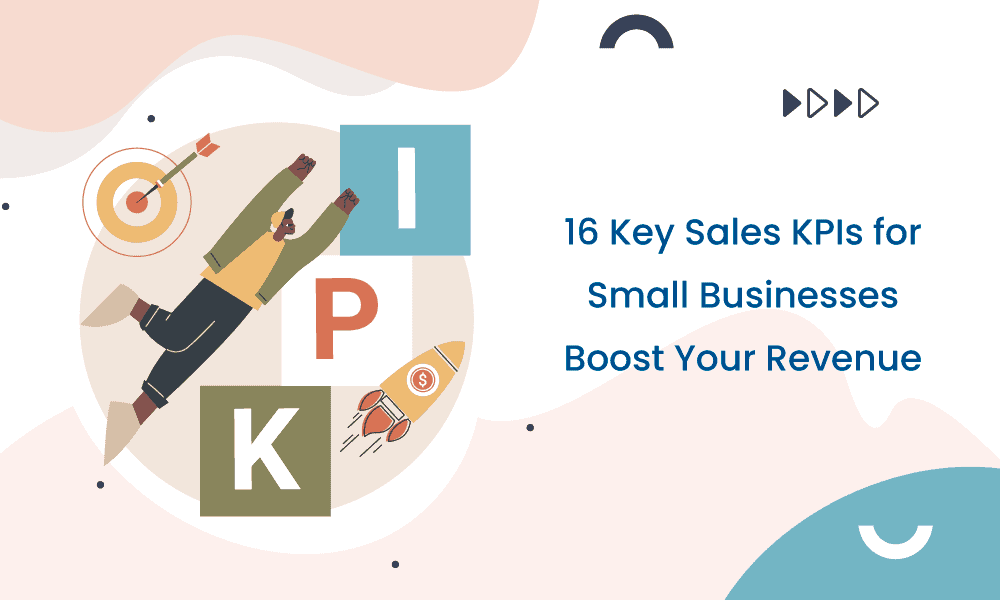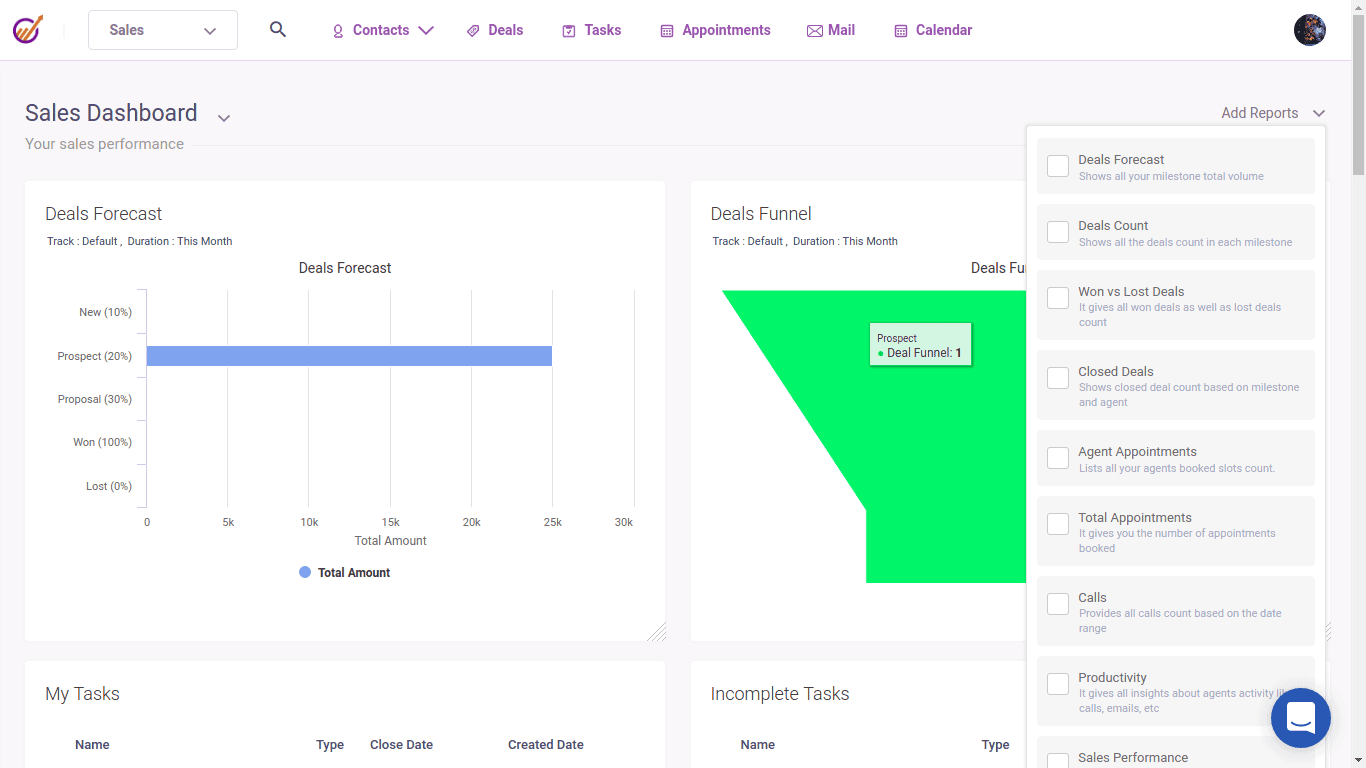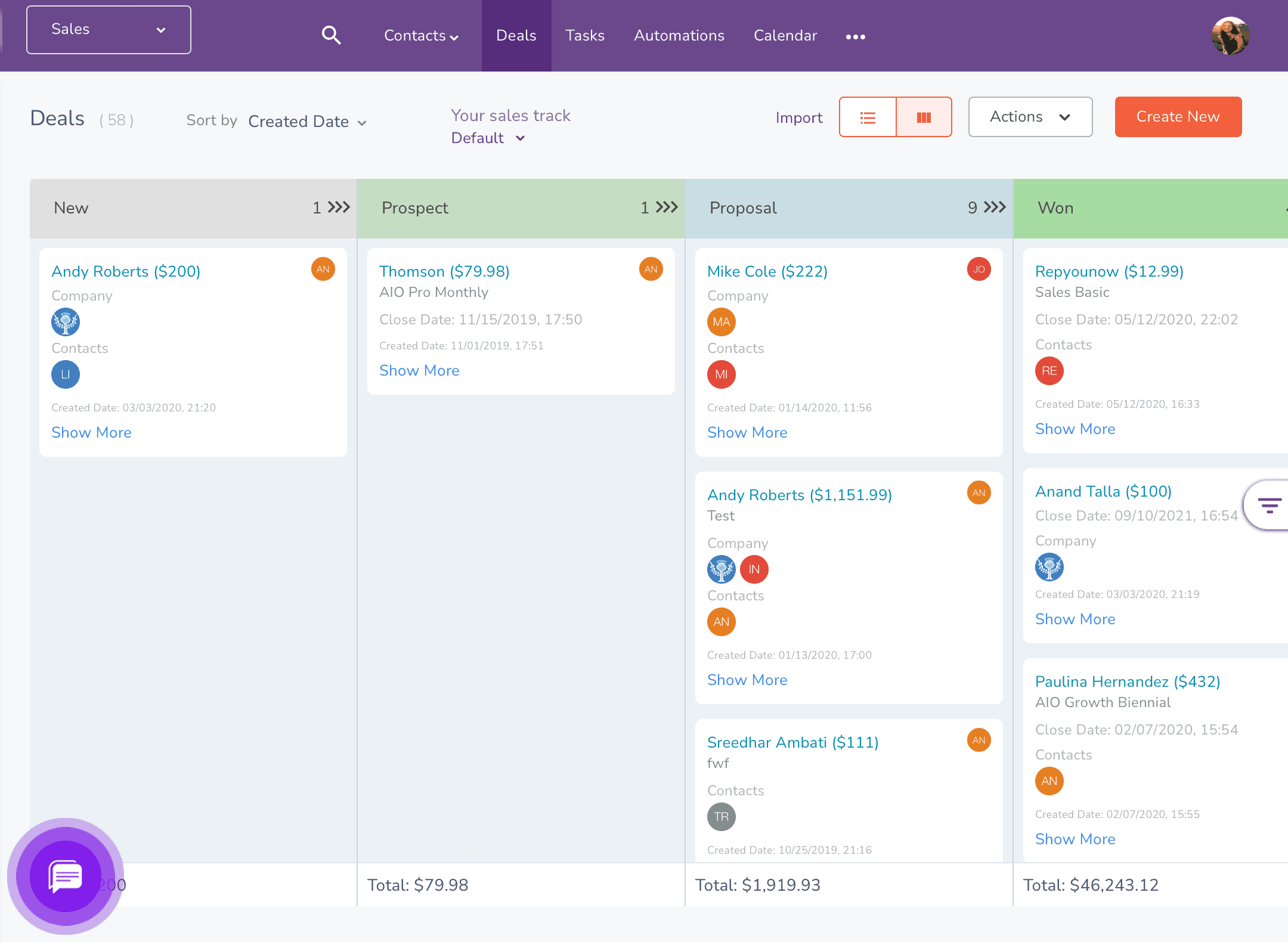Sales is often referred to as a numbers game, where success is determined by quantifiable factors such as the number of deals closed, customers acquired, customer acquisition cost, and products sold.
These metrics serve as tangible benchmarks that can be used to evaluate the performance and effectiveness of a sales department.
By meticulously calculating and analyzing these sales metrics, businesses can gain valuable insights into their team’s productivity, track growth patterns, and identify areas for process improvement.
In the fast-paced world of sales, having a deep understanding of your sales metrics and sales process
is crucial for achieving rapid sales revenue growth.
However, the challenge lies in selecting the most relevant key performance indicators (KPIs) to track. It seems that for every sales metric you aim to monitor, there is an abundance of alternative KPIs that claim to provide similar insights.
This saturation of options can make it overwhelming and confusing for sales professionals to determine which metrics are truly impactful and align with their specific business goals.
The key is to carefully identify and prioritize the sales metrics and KPIs that truly matter to your organization. Rather than getting lost in a sea of numbers, it’s essential to focus on the metrics that directly contribute to revenue generation, customer acquisition, and overall business growth.
By doing so, you can allocate your resources and efforts more effectively, ensuring that your team’s activities are aligned with the most impactful goals.
Furthermore, it’s crucial to regularly evaluate and refine your chosen sales metrics and KPIs. As the business landscape evolves and customer behaviors shift, new and more relevant indicators may emerge.
Staying adaptable and open to adjusting your measurement framework will enable you to capture changing market dynamics and seize opportunities for optimization.
By tracking the right metrics and KPIs, sales teams can gain insights into their sales process and make informed decisions to maximize their success. (Databox)
The key to successful sales analytics isn’t to track all KPIs, it’s to narrow down the right ones.
In this blog post, we will go over 16 key sales KPIs for small businesses that can help their sales department score more leads, and boost their revenue.
The 16 KPIs in this blog are organized into four categories:
- Customer acquisition
- Customer retention
- Product profitability
- Sales team productivity
Table of Contents
What are Sales KPIs?
A KPI is a key performance indicator. It’s a quantitative measurement that can help businesses measure their growth and success rate.
From a sales perspective, sales KPIs help measure the profitability or efficiency of the sales team. Sales KPIs give small business owners insight into areas to improve, which can lead to increased revenue growth.
For a sales leader or a sales representative, these KPIs can help define a strategy and offer a way to track progress.
Here’s a great video that explains a bit more about Sales KPIs:
16 Sales KPIs Every Small Business Needs to Track
To keep things simple and well-organized, we’ve divided the 16 key sales KPIs into four groups:
- Customer Acquisition
- Customer Retention
- Product Profitability
- Sales Team Productivity
Let’s dive in.
1. Sales KPIs to Track Customer Acquisition
Monthly New Leads
The monthly new leads metric informs you of how many sales qualified leads enter your sales pipeline per month.
These can be from your advertisements, word of mouth, referrals, phone calls, emails, social media, your website, or any other contact method.
This sales metric can also come under the marketing KPI umbrella — which is why it’s so important that small businesses align their marketing and sales teams.
Website Conversion Rate
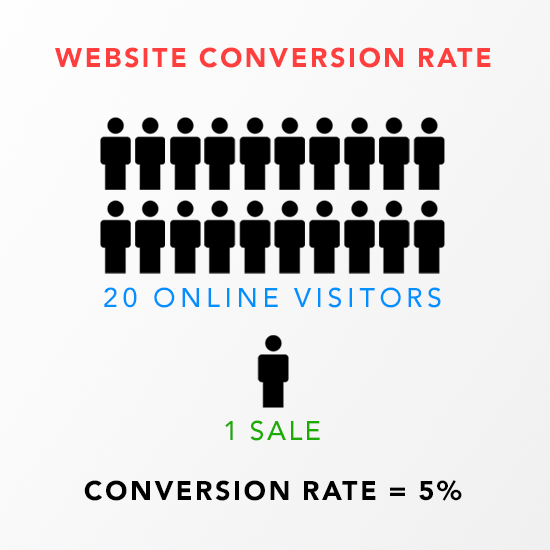
Your company, like every other, has a website that attracts traffic in the form of leads and both existing and potential customers. You want your website to be another channel through which you can convert more customers and generate sales.
“By tracking the website conversion rate metric, you can visualize how many qualified leads were converted, which pages had the most activity, and the areas that engaged new customers the most”, says Joey Sasson, Vice President of Sales & Logistics at Moving APT.
Lead Conversion Ratio
Every one of your customers began as a lead at some point until they progressed through the sales cycle via a sales team member.
The lead conversion ratio displays conversion rates as both a ratio and a percentage. This lead conversion rate percentage can be tweaked to be indicative of an individual’s or teams’ performance.
Lead-to-Opportunity Ratio
The lead-to-opportunity ratio measures the quality of the leads your company generates.
A lead that doesn’t know much about your company and is of questionable fit would be considered an unqualified lead.
Qualified leads are ideal, as they have some knowledge of the company, an appreciation of the purchase value, and a higher likelihood of buying.
With the lead-to-opportunity ratio, you can identify how many of these unqualified leads turn into sales-qualified leads.
Customer Acquisition Cost
Converting a lead to a new customer doesn’t happen for free. The marketing materials, sales tactics, and efforts employed by other members of your company come with a fee attached. With the customer acquisition cost, you can track the exact amount spent on each lead.
While there’s no way to avoid spending money on customer acquisition, you do want to ensure the sales revenue you’re generating per customer is more than the money you spent to convert them.
Read also: Marketing Automation KPIs You Need Like Coffee (Must-Have)
2. Sales KPIs to Track Your Customer Retention
Customer Churn Rate
Also known as customer turnover rate, customer churn rate isn’t a positive sales KPIs metric in the sales process, but is still worth monitoring anyway.
This data tells you how many paying customers quit on your company’s products and services, although it’s on you to figure out why this may be.
To paint an accurate picture of your customer churn rate, you need to track this rate monthly and then create a chart or graph with yearly data.
You always want the customer churn rates to trend lower than higher as the year wears on. Sales managers should also measure the customer retention rate for a detailed analysis.
Customer Lifetime Value
If there’s one must-have metric you absolutely should not skip of all these, it would be the Customer Lifetime Value.
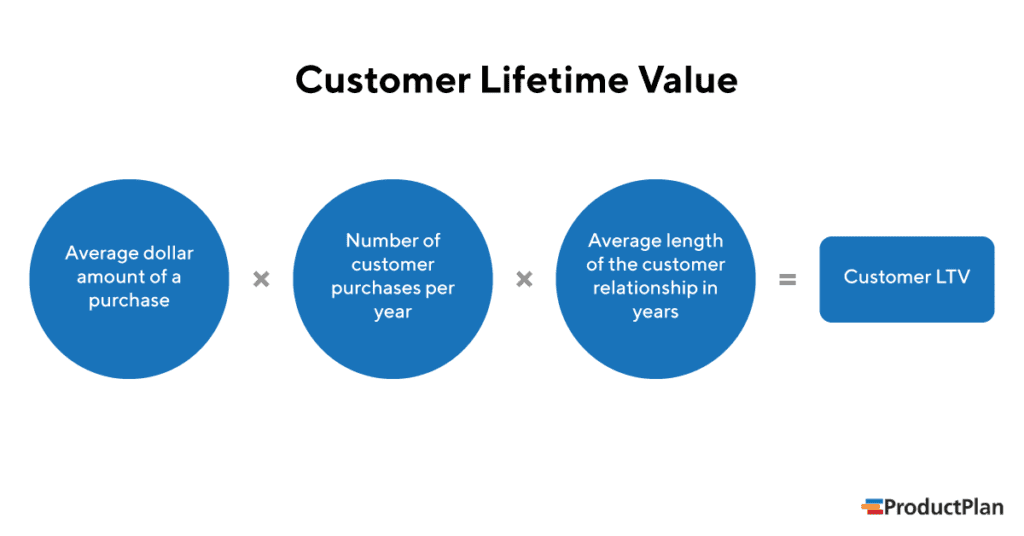
Customer Lifetime Value relates to how long your existing customers have stuck with you and continued buying your products and services.
You can see such information in the CLV as the total length of time a customer has purchased from you and how much money they’ve generated for you over time.
Should you want to, you can even break this information down month by month or year by year.
Every company wants an army of long-term buying customers. Knowing your Customer Lifetime Value will let you make a game plan for how to get these paying customers.
Read more: What is Sales Velocity and How Do You Measure this Metric?
3. Sales KPIs to Measure Your Product Profitability
Revenue Per Sales Rep
This next metric for sales KPIs is quite a lot like profit margin per sales rep, except it’s more about numbers than percentages.
With revenue, you’d count how much money every team member generates for the company.
You or your account managers can track this period over weeks, months, or even years if the data goes back that far.
“This metric also gives you the freedom to compare current sales periods against past ones to see if certain trends emerge throughout the year that may affect selling”, said Craig Anderson, Founder of Express Dentist.

Average Sales Cycle Length
To put it simply, the longer a sales cycle goes on, the unlikelier a closed deal becomes.
This lead or customer may be fickle, shifting between making the purchase, and not doing so. Your sales force wants to close the deal and move on, but they may not know what to do with this long-standing problem lead.

While longer sales cycles suit some products and services, your company probably has an ideal sales cycle length in mind.
By using that as the backbone for this sales KPIs metric, you can see where your sales reps measure up and where they still have work to do.
Read also: OKR Examples That Bring Out The Best In Different Teams
Service or Product Usage
While you do want to know the churn rate, or how many customers have abandoned your product or service, those numbers don’t mean as much without knowing how many people actively use your products/services.
The service/product usage metric will present this information so you can compare it against the churn rate and see if your churn is above average.
Read also: 14 Key Email Marketing KPIs Every Marketer Should Master in 2023
4. Sales KPIs to Track Sales Team Productivity
Incremental Sales by Campaign
You need many sales campaigns under your belt before you can begin measuring incremental sales by campaign.
For every marketing campaign your company launches, you can see how many sales were made to determine which campaign was the most effective.
You can calculate your own incremental sales by the campaign by taking your baseline sales and subtracting them from your newly generated sales.
Read also: What Is Sales Volume? 8 Strategies to Boost Your Revenue
Cross-Sell and Upsell Ratio
When you cross-sell, you take a product that the customer doesn’t already own and try to sell it to them as they make their original purchase.
Upselling is attempting to get the customer to buy a related product or accessory that pairs with their original purchase.
Both the cross-selling KPI and up-selling KPI can increase sales pipeline value, sales quota, and revenue growth if done correctly.
If your audience isn’t reacting well to attempts at cross-selling or upselling, you may wish to revise the methods you use, as many companies find this an easy and effective way of generating further sales.
Read also: The ONLY 8 Sales Performance Metrics That Matter
Sales Target
When your sales reps set their sales target, they’re introducing a short-term or long-term goal or conversion rate they wish to meet.
Perhaps they want to hit a certain number as a revenue target this year or gain X number of customers in the first quarter.
The sales target metric lets the sales managers see how close they are to meeting this goal, and, should they achieve it, how long it takes your sales reps to achieve the desired conversion rates.
Give the team a realistic amount of time to achieve these company goals as well or your sales targets will be resoundingly negative.
Sales Growth
The sales growth metric lets your company see how close you are to sales success, showing revenue by the current period, previous period, and even over the last several months or years.
Profit Margin Per Sales Rep
The profit margins per sales rep metric reviews the performance of each individual member of the sales team and is one of the most important sales KPIs.
You can review the percentage of sales, whether the sales reps are meeting their target sales (represented by percentage), and the profit margin per sale.
If one team member has proven to have a continuously impressive performance, that performance can be used as the yardstick for everybody else.
This also leads to better team performance and employee satisfaction.
Read also: 5 Simple Ways To Increase Revenue With Little Money
Monthly Sales Demo Quantity
Another of the KPIs for sales is the monthly sales demo quantity, a metric you can only make use of if your company sells products that require demo calls.
Using a demo is a great opportunity to drum up interest in your product as your customers get a feel for it.
They can also determine if it’s something they want to buy when they try the demo as part of a free trial.
Read more: How to Build the Perfect Sales Enablement Strategy
4 Tips to Define the Sales Metrics for Your B2B Sales Team
We’ve walked you through several sales KPIs that you can track to optimize your sales process.
As a sales team, you want to pick and track the right data that fits within your broader goals. How do you define which sales metrics KPIs are important?
Having a reliable sales KPIs format and staying goal-minded will allow you to take the sales performance KPI data you have and pull it together into something comprehensive.
Here are a few pointers to keep in mind:
1. Identify Your Main Objective and Other Goals
To keep the process of defining your B2B Sales KPI as organized as possible, you want to first select your company’s main objective or goal.
No matter what your primary goal or objective is, it’s important to select with it up to two smaller goals. These typically relate to your main objective, but their significance may be somewhat smaller.
2. Focus on the Goals
You may have drafted some broad objectives and goals — it’s essential that you familiarize yourself with all the smaller details.
If you want to increase your annual sales opportunities, for example, then you’d want to take the approach of going month by month, adding pieces to the whole.
You can get more specific than that, calculating what a realistic annual income might look like for your company at this stage.

3. Develop a Plan of Action
Now comes the time to put this plan into action, deciding what your sales and marketing teams would have to do to meet the primary objective.
Does it require revamping the sales process, marketing more heavily, or changing tact with leads or customers? Answering these questions will help you create a more focused and goal-oriented action plan.
Read more: 14 Small Business Marketing Truths No One Bluntly Tells You
4. Select the Metrics That Match Your Goals
As we mentioned before, sales KPIs are not a one-size-fits-all solution. After you’ve prioritized your goals, you want to focus on the metrics that are relevant to you.
For example, if your company wants to increase annual sales opportunities then you might consider tracking margin of profit, average sales cycle, average revenue per unit, or sales growth sales metrics.
Other performance sales metrics that we discussed throughout this article would apply as well but at different stages of accomplishing your primary objective and secondary goals.
Try to not overwhelm the team with too many metrics and too much data. Additionally, don’t forget to update your sales metrics as your objectives change.
Read more: Customer Lifecycle Management Guide for Small Business Owners
The Role of CRMs in Tracking Sales KPIs
If you’ve ever wondered about the role of CRMs in tracking sales metrics or how exactly marketing automation tools can help your business grow revenue, this post has you covered.
Sales and marketing teams should be working together to drive revenue growth. Customer Relationship Management software (CRMs) play a crucial role in enabling this by helping to manage the entire customer journey including Sales, Marketing, and Customer Support interactions.
EngageBay’s marketing automation software enables your sales team to focus on closing more deals with real-time, accurate data and a sales CRM that works in perfect sync with the lead & CRM database.
Among the key features of EngageBay’s integrated CRM is lead scoring, where leads are given a value based on their behavior.
This way, you can identify which leads are hot prospects and should be prioritized over others.
A unified CRM like EngageBay can change the way you track your sales KPIs. Sales reps can log updates from their sales calls, the marketing managers can check the performance of email blasts, and business owners can easily measure the effectiveness of their sales strategy.
The data you need to track & monitor your Sales KPIs is made easily available at a glance, with visual reports for both default and custom metrics.

With intuitive dashboards that are easy to use even on mobile devices, managers can keep an eye on key sales metrics like sales forecasts for upcoming months, the total number of opportunities by pipeline stage, or the revenue generated over time.
Apart from those regular metrics, make sure you track the following important sales KPIs closely.
Funnel Drop-Off Rate
The funnel drop-off rate, while not positive, can tell you where your company can do better when it comes to keeping leads and prospects within the sales funnel.
As the name implies, the funnel drop-off rate is the quantity of those who enter your sales funnel but exit prematurely.
Perhaps they jump off before they make a single purchase, or perhaps all you get out of them is money for one product/service.
Response Time Rate
In the same vein as the relationship freshness rate is your sales team’s response time rate, as both these metrics are to the benefit of your relationship with your customer.
With the response time rate, how long it takes the sales rep to reach out is reviewed, especially in relation to its effect on the lead conversion rates.
Read more: Sales Enablement Guide for Small Business Owners (Glossary, Strategies)
Conclusion
In the highly competitive field of sales, it is crucial to arm yourself with the right tools to navigate the challenges and maximize your chances of success.
One of the most powerful tools at your disposal is data, which provides valuable insights into customer behavior, market trends, and the effectiveness of your sales process and strategies.
However, data alone is not enough. To truly leverage its potential, you need a comprehensive Customer Relationship Management (CRM) system.
While it may be tempting to track as many key performance indicators (KPIs) as possible, the truth is that more isn’t always better.
Without the proper software to analyze and interpret the data, you risk being overwhelmed by an abundance of metrics without gaining meaningful insights. A CRM system acts as a central hub, collecting and organizing your sales data, and providing the necessary tools to streamline and optimize your sales processes.
By utilizing an integrated software platform like EngageBay, you can simplify the tracking and analysis of sales KPIs. Such CRM systems offer a range of features and functionalities designed specifically for sales reps.
They enable you to monitor critical metrics, such as conversion rates, pipeline progression, and customer acquisition costs, in real-time. With this valuable information at your fingertips, you can make data-driven decisions, identify areas for improvement, and adjust your strategies accordingly.
Moreover, an effective CRM system facilitates collaboration and communication within your sales team, promoting a unified approach towards achieving common goals.
It enables seamless data sharing, automates routine tasks, and provides comprehensive reporting capabilities. By harnessing these capabilities, you can enhance productivity, streamline workflows, and ultimately drive revenue growth.
In the fast-paced and ever-evolving sales landscape, having a reliable CRM system is no longer a luxury but a necessity. It empowers you to stay ahead of the competition, make informed decisions, and build strong relationships with your customers.
The integration of sales KPI tracking within a comprehensive software platform like EngageBay ensures that you have all the tools required to succeed in the challenging world of sales.
In conclusion, in order to thrive in the competitive field of sales, it is essential to equip yourself with the right tools. Data is undoubtedly a significant part of your toolset, but without a robust CRM system, its potential remains untapped.
By utilizing an integrated software platform like EngageBay, you can effectively track and analyze sales KPIs, optimize your sales processes, and propel your business towards greater success. Embracing the power of data and leveraging a CRM system will give you the competitive edge necessary to excel in today’s sales landscape.
With EngageBay, you can streamline your sales processes, make informed decisions, boost growth, and close more deals. EngageBay also helps you map all your customer touchpoints and measure your sales performance accurately.
You can sign up to try EngageBay for free, and our team will get in touch with you to help you with what you need.

